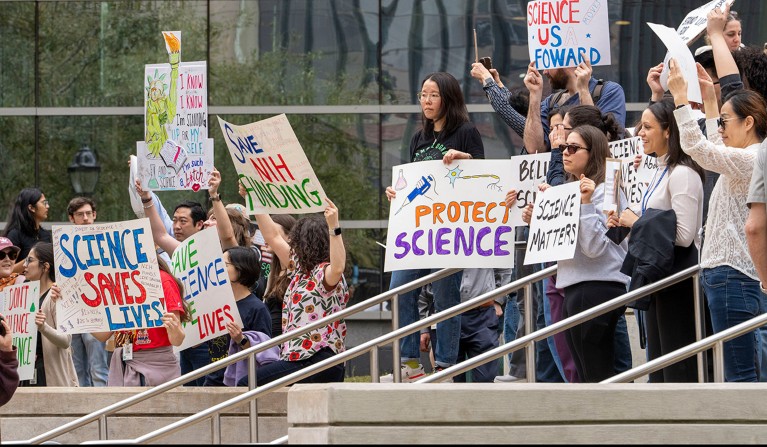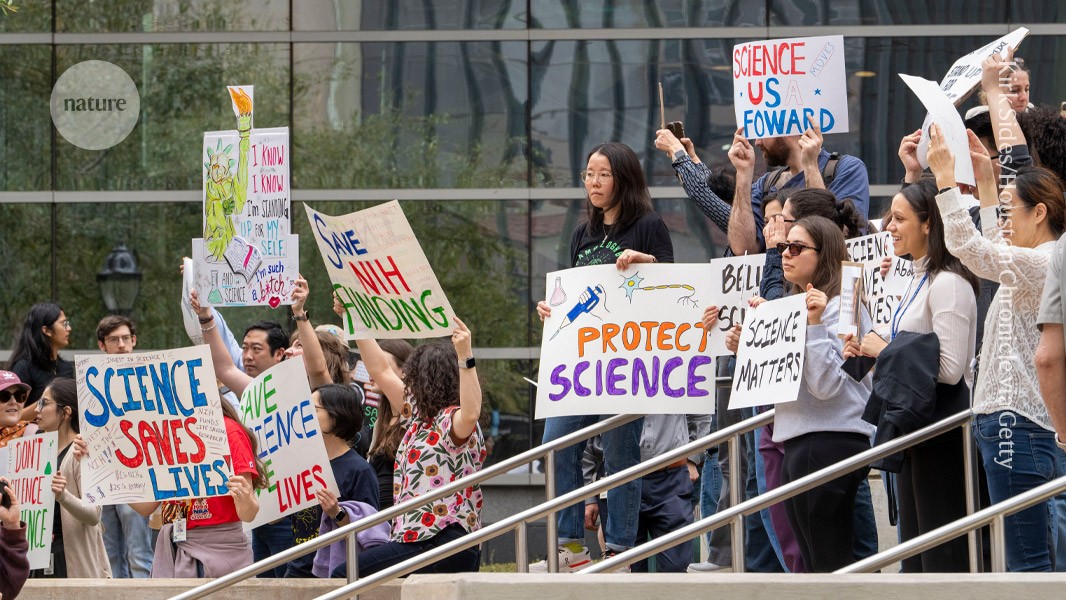
The cuts to science under the Trump administration have sparked protests and will threaten the positions of many international early-career researchers.Credit: Kirk Sides/Houston Chronicle via Getty
A stem-cell biologist who has spent the past 14 years in the United States is one of a growing number of early-career scientists who are considering leaving the country.
Under the administration of President Donald Trump, international scientists in the United States — particularly those at the start of their careers — face tough conditions, including grant terminations, threats that visas will be cancelled and reduced employment opportunities.
The scientist, who asked to remain anonymous because he fears his immigration status could be terminated, doesn’t want to leave the United States. “I wanted to stay here, and I wanted to leverage the fact that these great schools can provide big opportunities to do really good science,” he says. But he thinks the changes brought about by Trump’s administration mean there won’t be enough funding or graduate students to start a new laboratory. His best option is to leave the country and go to Europe, he says.
He’s not alone. In May, in a small survey of 378 early-career scientists by the National Postdoctoral Association (NPA), 44% said their jobs were threatened by the actions of the Trump administration. And in a poll of Nature readers in March, more than 800 postgraduate researchers and PhD students said they were considering leaving the country as a result of the disruptions to science. The reader poll was self-selected and not a representative sample of US researchers.
Best place
Since the end of the Second World War, the United States has invested heavily in scientific research. This funding has attracted scientists from around the globe, and has produced the diverse scientific network that US research and development relies on today.
It was this science powerhouse that drew a cellular biologist from Canada to the United States in 2022 for a postdoctoral research position in New York. But between funding cuts and vanishing career opportunities, says the scientist, who wished to remain anonymous, the costs of staying in the United States are starting to outweigh its appeal. She’s looking for faculty positions in Canada and Australia. Funding to start a lab is generally lower in those countries than it is in the United States, but the career prospects seem more stable, she says.
Under Trump, the National Institutes of Health (NIH) and the National Science Foundation (NSF) have attempted to slash the amount they pay for research overheads, also called indirect costs, from about 40–70% down to 15%. Universities use research overhead payments to cover the cost of utilities, insurance and other costs that support research. But the payments can also cover salaries for postdocs and staff scientists, says Caroline Wagner, a specialist in science and technology policy at the Ohio State University in Columbus. As a result, early-career scientists’ jobs will be cut to balance the budgets, Wagner says. So far, NIH and NSF’s attempts have been blocked by the courts. The NIH has appealed.


